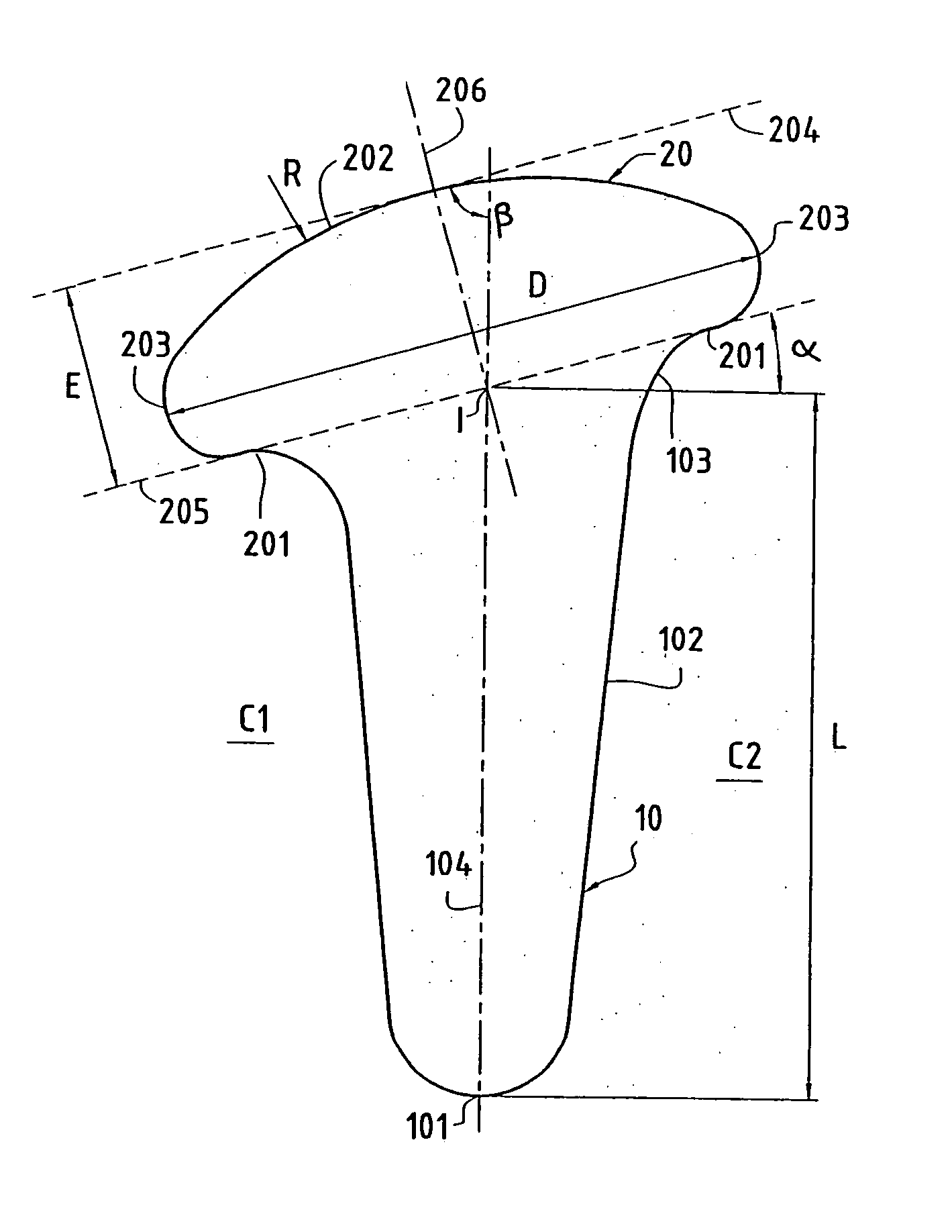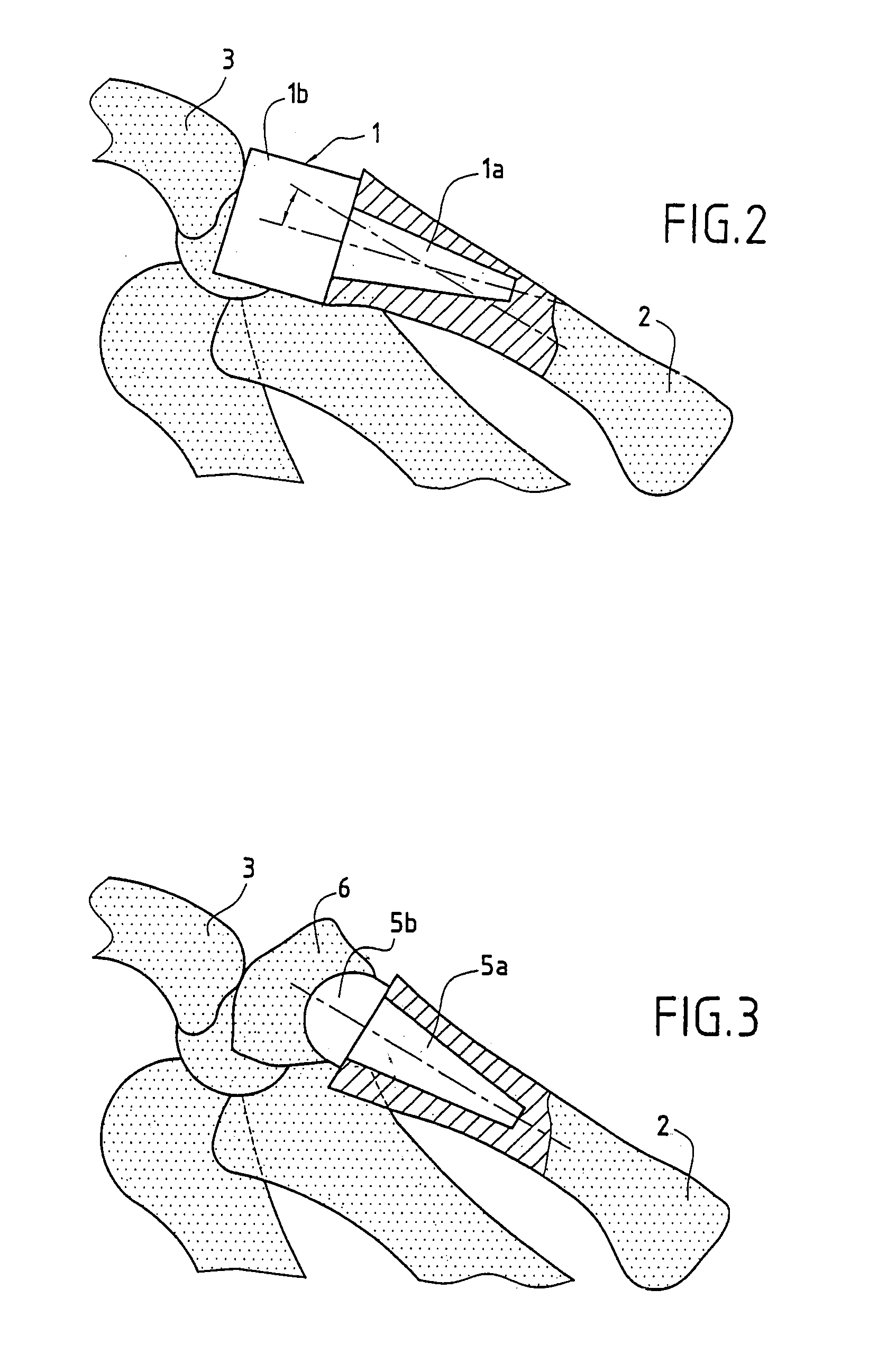Trapezium or trapezometacarpal implant
a trapezometacarpal and trapezium technology, applied in the field of trapezal or trapezometacarpal implants, can solve the problems of deterioration of the implant, affecting the work of the surgeon, and affecting the function of the implant, so as to avoid excessive bone fragility, facilitate the work of the surgeon, and reduce the effect of deterioration
- Summary
- Abstract
- Description
- Claims
- Application Information
AI Technical Summary
Benefits of technology
Problems solved by technology
Method used
Image
Examples
first embodiment
[0030]FIG. 4A shows an implant according to the invention.
[0031]The implant according to this first embodiment is a trapezo-metacarpal implant, in the general form of a nail. It comprises a stem 10 terminating, at a so-called proximal end, in a head 20 and whose opposite end, called the distal end, is constituted by a point 101.
[0032]Stem 10 is adapted to be inserted in the metacarpus of the thumb, and the head 20 to be disposed in a space obtained on the one hand by providing a cut or resection on the proximal end of the metacarpus and on the other hand by removing a portion of the trapezium facing the proximal portion of the metacarpus.
[0033]The head 20 has a flattened shape. Its longitudinal section is circular. Its surface is constituted by an annular and plane base 201 connected to the proximal end of the stem 10 and adapted to rest on the proximal portion of the metacarpus, a distal surface portion 202 opposite the base 201 and serving as a contact and friction surface with th...
second embodiment
[0044]FIG. 6 shows the implant according to the invention. The implant according to this second embodiment is a trapezo-metacarpal implant which differs from the implant according to the first embodiment essentially in that only the distal surface portion 202a is inclined relative to the stem 10a, and not the entire head 20a. Thus, the base 201a of the head 20a is perpendicular to the longitudinal axis 104a of the stem 10a. The connection portion 203a of the head 20a is thus higher on the side C2 of the implant where the angle between the distal surface portion 202a and the axis 104a is greater, than on the opposite side C1.
[0045]As in the first embodiment, the distal surface portion 202a is preferably offset relative to the axis 104a of the stem to the side C1.
[0046]The ratios indicated above between the diameter D of the head and the length L of the stem, and between the radius of curvature R of the distal surface portion of the head and the length L of the stem, also hold true fo...
PUM
| Property | Measurement | Unit |
|---|---|---|
| angle | aaaaa | aaaaa |
| angle | aaaaa | aaaaa |
| angle of inclination | aaaaa | aaaaa |
Abstract
Description
Claims
Application Information
 Login to View More
Login to View More - R&D
- Intellectual Property
- Life Sciences
- Materials
- Tech Scout
- Unparalleled Data Quality
- Higher Quality Content
- 60% Fewer Hallucinations
Browse by: Latest US Patents, China's latest patents, Technical Efficacy Thesaurus, Application Domain, Technology Topic, Popular Technical Reports.
© 2025 PatSnap. All rights reserved.Legal|Privacy policy|Modern Slavery Act Transparency Statement|Sitemap|About US| Contact US: help@patsnap.com



